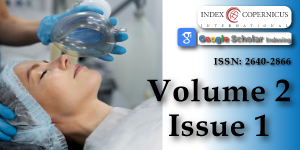Some aspects of quality of ambulance care and completeness of information in the transfer forms of emergency patients who arrived in ambulances at the National Hospital of Sri Lanka
Main Article Content
Abstract
Objective: To describe some aspects of the quality of ambulance care and completeness of information in the transfer forms of emergency patients who arrived in ambulances to the National Hospital of Sri Lanka (NHSL).
Methods:This was a descriptive study. All ambulances arrived at the NHSL during the study period with an emergency patient were selected (n=409) and from those 250 transfer forms, which could be traced were taken. An interviewer-administered questionnaire was used for ambulance staff. A Checklist, which has been derived from the standard patent chart, was used to determine the availability of information on transfer forms.
Results: Of the 409 ambulances, the patient was accompanied by a doctor in 4% (n=16), a nurse in 4% (n=15) and Emergency Medical Technicians (EMTs) in 1% (n= 4), and there were 675 miner employees and 409 drivers. Twenty six percent (n= 4) of doctors, 12.5% (n= 2) of nurses, 100% (n=4) of EMTs, 56.9% (n=189) of drivers and 24.3% (n=164) of minor employees had received training in emergency medicine/pre-hospital care.
The time interval between receipt of the message and loading the patient to the ambulance was >15 minutes on 19% (n= 75) of the occasions and from the latter time to commencement of the journey was >15 minutes on 7% (n=27) of the occasions.
The call number of sending facility 0.4% (n=1) and sending time 33.2% (n=83) were poorly documented. The past surgical histories 20.8% (n=52), chronic diseases 48% (n=120), psychological problems 13.2% (n=33) and allergies 9.2% (n=23) were poorly documented. Details of physical examination findings except cardio-vascular system were not documented in >50% of transfer forms. Medications had been documented fairly (>60%) in most of the transfer forms and however, the procedures (IV fluids, ECG) were poorly documented (<30%).
Conclusion: The completeness of information in the transfer form was not up to standards. This emphasizes for need of well-structured standard transfer form in the country.
Article Details
Copyright (c) 2019 Abeysena C, et al.

This work is licensed under a Creative Commons Attribution 4.0 International License.
Institute Of Medicine (IOM). To err is human: Building a safer healthier system. Washington DC: The national Academic press. 2000; Ref.: https://goo.gl/LdTZz8
Nicholl J, West J, Goodacre S, Turner J. The relationship between distance to hospital and patient mortality in emergencies: an observational study. Emerg Med J. 2007; 24: 665–668. Ref.: https://goo.gl/Sg3GB6
Waydhas C. Intra-hospital transport of critically ill patients. Crit Care. 1999; 3: R83–89. Ref.: https://goo.gl/ojFKYW
Till A, Sall H, Wilkinson J. Safe Handover: Safe Patients - The Electronic Handover System. BMJ Quality Improvement Reports 2014; 2: u2029.w1359. Ref.: https://goo.gl/63ByL2
Wood K, Crouch R, Rowland E, Pope C. Clinical handovers between pre hospital and hospital staff: literature review. Emerg Med J. 2015; 32: 577-581. Ref.: https://goo.gl/jQNcDf
Nandasena G, Abeysena C. Availability of facilities and equipment to provide emergency care in ambulances, which transport patients to the National Hospital of Sri Lanka. Journal of College of Community Physicians of Sri Lanka. 2019.
Professional guidance on the structure and content of ambulance records. Royal College of Physicians. 2014; Ref.: http://bit.ly/2Rd42Wa
Khan A, Zafar H, Naeem SN, Raza SA. Transfer delay and in-hospital mortality of trauma patients in Pakistan. Int J Surg. 2010; 8: 155–158. Ref.: https://goo.gl/WViFwW
Kulshrestha A, Singh J. Inter-hospital and intra-hospital patient transfer: Recent concepts. Indian J Anaesth. 2016; 60: 451–457. Ref.: https://goo.gl/4AMuqa
Verma V, Singh GK, Carvello EJ, Kumar S, Singh CM, et al. Inter-hospital transfer of trauma patients in a developing country: A prospective descriptive study. Indian J Community Health. 2013; 25: 309–315. Ref.: https://goo.gl/PwtY9g
Paker SA, Dagar S, Gunay E, Cebeci ZT, Aksaye E. Assessment of prehospital medical care for the patients transported to emergency department by ambulance. Turk J Emerg Med. 2015; 15: 122–125. Ref.: https://goo.gl/wB2XZk
Crandon IW, Harding HE, Williams EW, Cawich SO. Inter-hospital transfer of trauma patients in a developing country: A prospective descriptive study. Int J Surg. 2008; 6: 387–391. Ref.: https://goo.gl/mvkfxE
Shelton D, Sinclair P. Availability of ambulance patient care reports in the emergency department. BMJ Quality Improvement Reports 2016; 5: u209478.w3889. Ref.: https://goo.gl/v9CMZ8

